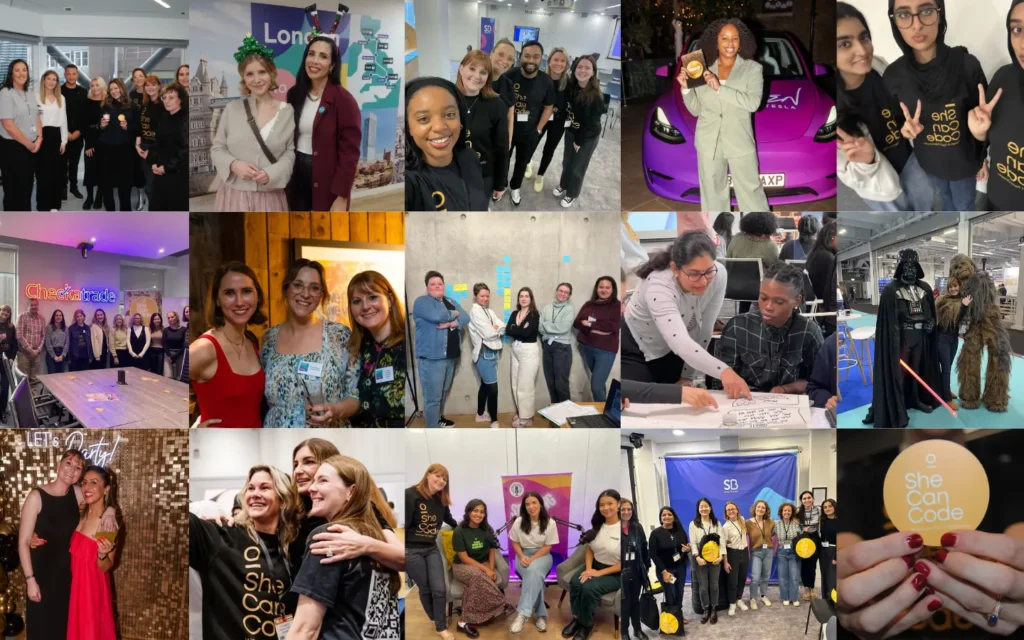Earlier this month, an opinion piece written by Wall Street Journal columnist, Andy Kessler, argued that the reason for Silicon Valley Bank’s fall may have been because they were “distracted by diversity demands.”
Silicon Valley Bank (SVB) collapsed in the US after failing to raise enough money to cover losses from the sale of assets that were affected by higher interest rates.
SVB specialised in lending to start-up firms, and the company served nearly half of US venture-backed technology and healthcare companies that had listed on stock markets last year. HSBC announced that it had bought the UK arm of SVB for £1 in a rescue deal.

In a time where we’re seeing increasing mass layoffs, that are already hitting diversity and inclusion hard, Sheree Atcheson, Global Director of Diversity and Inclusion at Valtech, says that this is a problematic stance to take and we shouldn’t allow diversity to become the ”scapegoat” for future failures.
Listed as one of the UK’s Top Most Influential Women in Tech, and an international multi-award winner for her services to Diversity & Inclusion in the industry, Sheree Atcheson is a Global Diversity, Equity and Inclusion Senior Executive; Advisory Board Member, Women Who Code; Contributor, Forbes. She is the Author of “Demanding More” – a book which aims to teach readers about how deliberate exclusion has been in systems and society, so we can be purposefully and deliberately inclusive moving forward.
Having worked in many regions developing tailored, data-driven DE&I strategies, with clear goals and lines of accountability to embed success and inclusion that scales, Sheree now works at Valtech as the Global Director of Diversity & Inclusion. As a passionate advocate for gaining/retaining women in the industry, in 2013, she launched & led the award-winning U.K. expansion of Women Who Code the world’s largest non-profit globally dedicated to women in tech, where she now sits as an Advisory Board Member.
She said, “When embracing diversity is blamed for businesses doing poorly (or in this case, catastrophically), and the real reasons are not discussed (such as an unfit-for-purpose risk process), we are using a scapegoat to take responsibility from all of those at the table.”
“This is irresponsible. Businesses do not fall lightly – there are decisions that have been made that have brought those scenarios into sight.”
“Embracing diversity is not one of those decisions.”
“In this scenario, to supersede all other board and executive decisions as almost irrelevant and focus solely on the diversity of the team, is frankly one of the most ridiculous things I’ve read. Strategy decisions and business direction decisions are not made lightly – they are deliberated and concise.”
“Unfortunately, sometimes they are also wrong. This is one of those times.”
Success or failure
Addressing Kessler’s thoughts that “12 white men would have avoided this mess”, Atcheson added, “The sweeping statement inferring that this downfall may not have happened if a homogeneous team of men were at the table, is facetious.”
“Firstly, are we going to pretend that businesses led by homogenous teams of men do not fail too?”
“We see it almost every day. Some make it and some don’t.”
“Sometimes success just isn’t on the cards or decisions have been made that weren’t right. We know that from a gender perspective, men are represented more in executive and management roles.”
“For example, only 86 women are promoted for every 100 men promoted to manager, and as a result men significantly outnumber women at those levels. For ethnic diversity, UK-wide data suggest that people from Black, Asian and minority ethnic backgrounds occupy 4.7% of senior leadership roles across the public, private, and third sectors, and only 2% of FTSE 100 company CEOs, despite accounting for 13% of the UK population.
“Teams of homogenous groups of men fail every, single, day – where is the article from this source blaming them for the same types of downfall?”
A knock-on effect
“Secondly, this rhetoric will have a knock-on effect on the hiring of future under-represented leaders.”
“Bias always sits just underneath the surface and it doesn’t take much for it to rear it’s ugly head. By drawing strawman argument here, this piece taps into the bias that many already have, bringing it forward and enabling it – “Oh, we shouldn’t hire *that* person, because look at what happened to SVB.”. It’s lazy and unintelligent.
“It’s unfortunate someone with this platform is happy to undermine and tarnish the abilities of so many phenomenal under-represented leaders with one fell swoop.”








